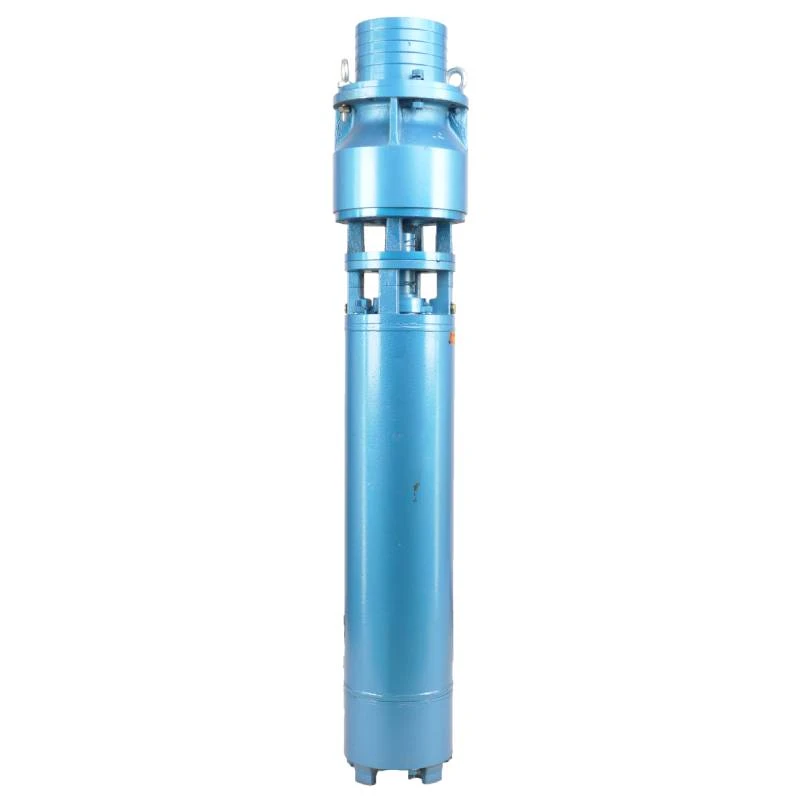Nov . 27, 2024 17:10 Back to list
Choosing the Right Submersible Pump for Your Water Tank Needs
Submersible Pumps for Water Tanks An Essential Guide
In today’s world, efficient water management is critical for both domestic and industrial applications. One solution that has gained popularity for transferring water from underground sources to water tanks is the submersible pump. This article delves into what submersible pumps are, how they function, their advantages, and considerations for their use in water tanks.
What is a Submersible Pump?
A submersible pump is a device designed to be submerged in fluid, typically to transport the liquid to the surface. These pumps are hermetically sealed to prevent water from entering the motor and are driven by a motor located above the liquid level. Submersible pumps are primarily used for boreholes, wells, and other water sources where the liquid needs to be lifted from depths that exceed what a standard surface pump can achieve.
How Do Submersible Pumps Work?
The operation of a submersible pump is quite straightforward. Once submerged, the pump's motor drives an impeller, which creates a centrifugal force that pushes the water upwards through the discharge pipe. The design allows for minimal obstruction and maximizes efficiency. By being placed underwater, submersible pumps benefit from the surrounding fluid, which helps in cooling the motor and enhances the overall performance of the pump.
Applications of Submersible Pumps in Water Tanks
Submersible pumps are widely used in various applications related to water tanks
1. Domestic Use Homeowners often use submersible pumps to fill water storage tanks. These pumps are crucial in areas with water scarcity or where groundwater is the primary source of potable water.
2. Agricultural Use Farmers employ submersible pumps to irrigate fields. By pumping water from wells or subterranean sources, farmers can ensure their crops receive adequate hydration, leading to better yields.
3. Industrial Use Industries requiring large quantities of water often use submersible pumps to supply water to cooling towers, processing facilities, or to manage wastewater.
4. Emergency Drainage Submersible pumps are ideal for emergency flooding situations, providing a quick and effective way to remove excess water from basements, construction sites, or flooded areas.
Advantages of Submersible Pumps
Submersible pumps offer several advantages that make them a preferred choice for water tank applications
submersible pump for water tank

2. Durability Built to withstand the harsh conditions of being submerged, submersible pumps are often made from robust materials that resist corrosion and wear.
3. Lower Noise Levels Being submerged, these pumps operate at low noise levels compared to surface pumps, making them suitable for residential areas.
4. Space-Saving Design Their compact size allows for installation in areas where space is limited.
5. Self-Priming Submersible pumps eliminate the need for priming; they can start pumping immediately upon being submerged.
Considerations When Choosing a Submersible Pump
When selecting a submersible pump for water tank applications, several factors should be taken into account
1. Depth of Water Source Understand the vertical lift required. Ensure the pump’s capacity matches the depth and volume of water to be lifted.
2. Flow Rate Determine the required flow rate (usually measured in gallons per minute or liters per second) based on daily water needs.
3. Power Source Assess the energy availability and choose a pump that is compatible, whether it’s electric, solar, or gas-powered.
4. Material Consider the material of the pump casing. Stainless steel is preferable for its corrosion resistance, especially in aggressive water conditions.
5. Maintenance Needs Regular maintenance is essential for longevity. Check for models that are easy to service and repair.
Conclusion
Submersible pumps play a pivotal role in modern water management systems, particularly in providing water to tanks for domestic, agricultural, and industrial uses. Their efficiency, durability, and silent operation make them an ideal choice in various applications. By understanding their functionalities and considering the relevant factors when selecting a pump, users can ensure a reliable water supply while optimizing their investment for years to come.
-
Submersible Water Pump: The Efficient 'Power Pioneer' of the Underwater World
NewsJul.01,2025
-
Submersible Pond Pump: The Hidden Guardian of Water Landscape Ecology
NewsJul.01,2025
-
Stainless Well Pump: A Reliable and Durable Pumping Main Force
NewsJul.01,2025
-
Stainless Steel Submersible Pump: An Efficient and Versatile Tool for Underwater Operations
NewsJul.01,2025
-
Deep Well Submersible Pump: An Efficient 'Sucker' of Groundwater Sources
NewsJul.01,2025
-
Deep Water Well Pump: An Efficient 'Sucker' of Groundwater Sources
NewsJul.01,2025
-
 Submersible Water Pump: The Efficient 'Power Pioneer' of the Underwater WorldIn the field of hydraulic equipment, the Submersible Water Pump has become the core equipment for underwater operations and water resource transportation due to its unique design and excellent performance.Detail
Submersible Water Pump: The Efficient 'Power Pioneer' of the Underwater WorldIn the field of hydraulic equipment, the Submersible Water Pump has become the core equipment for underwater operations and water resource transportation due to its unique design and excellent performance.Detail -
 Submersible Pond Pump: The Hidden Guardian of Water Landscape EcologyIn courtyard landscapes, ecological ponds, and even small-scale water conservancy projects, there is a silent yet indispensable equipment - the Submersible Pond Pump.Detail
Submersible Pond Pump: The Hidden Guardian of Water Landscape EcologyIn courtyard landscapes, ecological ponds, and even small-scale water conservancy projects, there is a silent yet indispensable equipment - the Submersible Pond Pump.Detail -
 Stainless Well Pump: A Reliable and Durable Pumping Main ForceIn the field of water resource transportation, Stainless Well Pump has become the core equipment for various pumping scenarios with its excellent performance and reliable quality.Detail
Stainless Well Pump: A Reliable and Durable Pumping Main ForceIn the field of water resource transportation, Stainless Well Pump has become the core equipment for various pumping scenarios with its excellent performance and reliable quality.Detail
